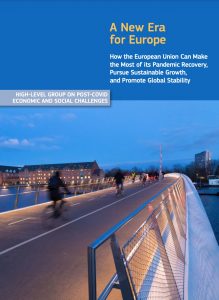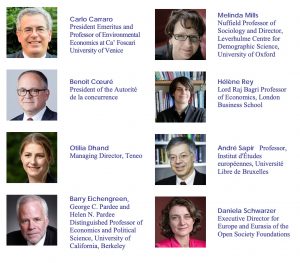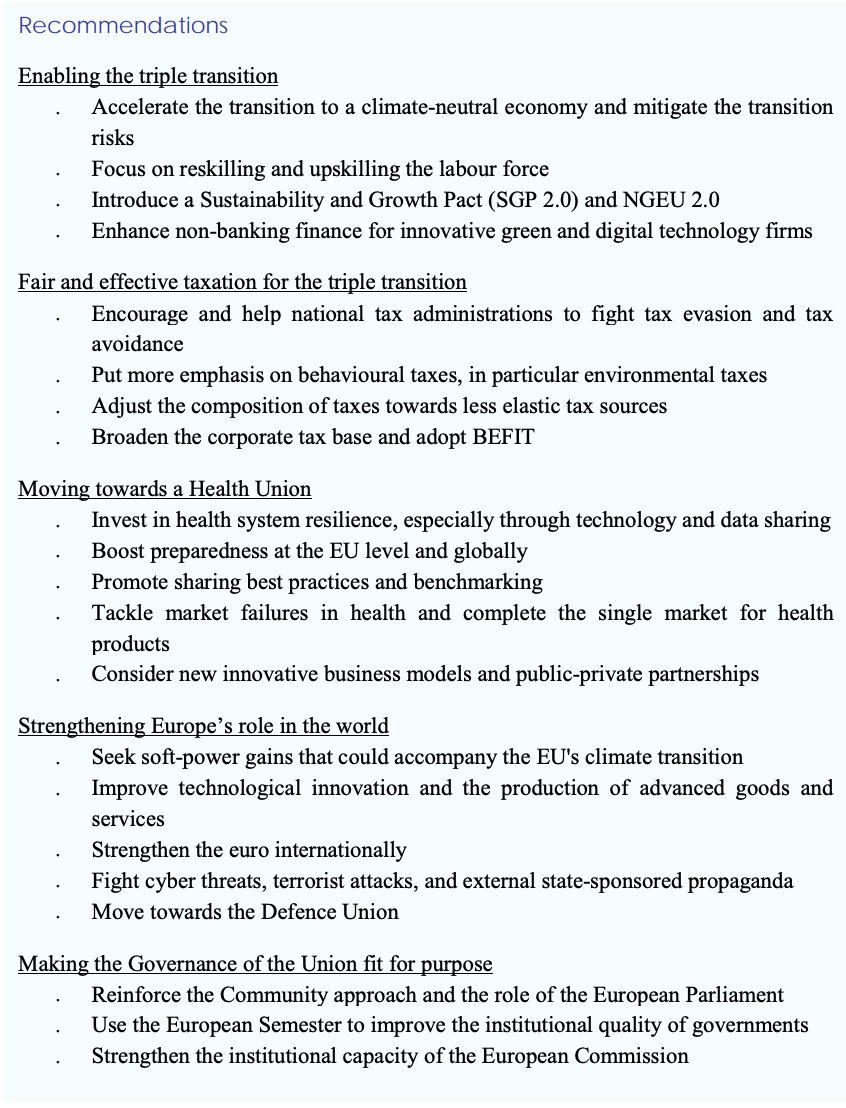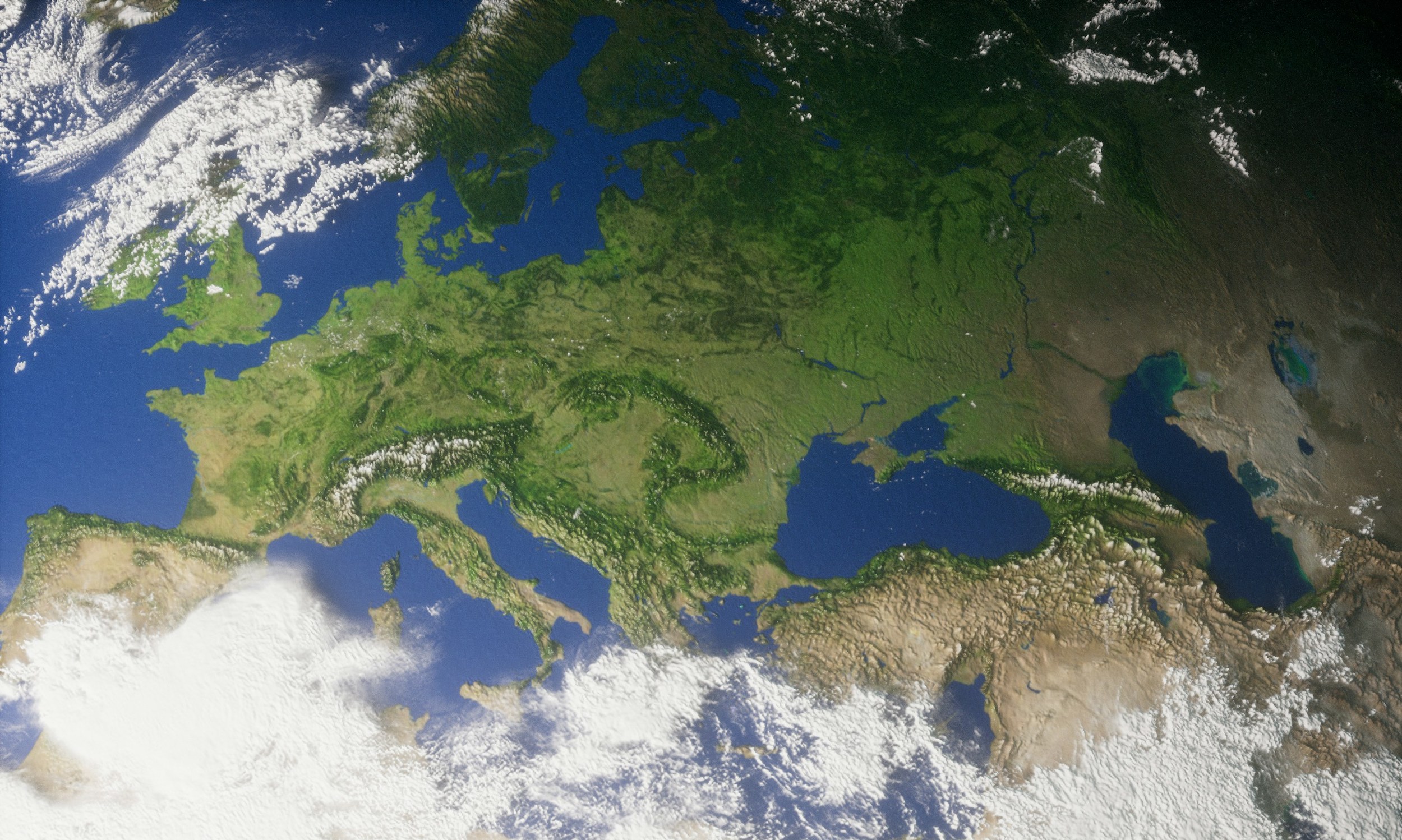
Europe finds itself in the midst of a paradigm shift. The aftermath of the COVID pandemic, war raging in Ukraine and the deepening climate crisis – which was made even more evident in the latest IPCC Working Group II report – are the tell-tale signs. Today’s policy decisions have the potential to usher in a new era for Europe or lead to division, conflict and environmental destruction.
Ensuring that the right pathway is undertaken requires research and understanding of how policy decisions will influence future pathways so that the medium to long term effects are considered.
A central part to this is creating future scenarios that can depict the world of tomorrow based on the decisions of today.
To this end, the report of the High-Level Group convened by Commissioner for the Economy, Paolo Gentiloni, on post-COVID economic and social challenges looks at what a new era for Europe engenders and how the Union can make the most of its pandemic recovery, pursue sustainable growth, and promote global stability.
What lies ahead
As with all paradigm shifts, it is evident that the world is undergoing profound political and social turmoil that will go hand in hand with changes in the needs, priorities and interests of people.
It is also a moment when determining what future lies ahead is still up for grabs, whereby the decisions we make today will have lasting and potentially irreversible consequences on the world of tomorrow.

“A New Era for Europe” looks at both how general policy decisions – taken before and during the pandemic – offer an indication of what lies ahead, whilst giving key suggestions that can help the EU undertake a more progressive and targeted direction, drawing on past achievements and avoiding past mistakes.
The positive response to the COVID crisis, which featured joint procurement of COVID vaccines and joint fiscal capacity on an unprecedented scale, gives a sense that there is still room for Europe to respond to the coming challenges.
However, the first step is to envisage an ideal future that will require a three-pronged green, digital and social transition. Once this future is identified then the necessary steps for enabling it must be articulated. This means creating fair and effective taxation for the triple transition, moving towards a Health Union, strengthening Europe’s role in the world, and making the governance of the Union fit for purpose.
But, what if the pathway to this ideal future is not undertaken? The alternative is one of fragmentation where conflicts, such as the one currently raging in Ukraine, will become more common and plunge the EU into still further crises.

A union of the public and private
The backbone of any effective transition is both understanding the financial, political, and environmental challenges ahead and putting forth recommendations to ensure that they are navigated safely.
This also revolves around ensuring that both the private and public sectors work together to favour green, digital and social innovations.
There are many examples of this in the European context. With regards to public sector initiatives, the EU can draw on its experience and success with the NextGenerationEU project. On the private side, fostering investment by strengthening the Banking Union, moving towards a Capital Markets Union and providing incentives that push private actors to implement climate-friendly investments over business as usual practices may be instrumental.
🆕 Recovery and Resilience Facility #NextGenerationEU: One year on
The first annual report on the implementation of the Recovery and Resilience Facility finds implementation is well underway. #NextGenEU
— EU Economy & Finance (@ecfin) March 1, 2022
Moving on from business as usual practices is key to adapting to a changing world. For example, the EU can help the private sector move away from fossil fuel sources – to renewables and other low-carbon energy – using policy options and market mechanisms.
Instruments such as carbon pricing, well-targeted subsidies, insurance schemes, research and development incentives, and other kinds of sector-specific standards and norms can all prove crucial in shaping the world to come.
With regards to market conditions, reductions in the cost of crucial technologies – from photovoltaics to batteries – combined with increases in overall fossil fuel prices and volatility will drive low-carbon investments throughout the economy.
A theme that is once again critical as energy prices have spiked in the aftermath of the Russian invasion of Ukraine. “The green transition is also the only definitive way for the EU to achieve energy security, price stability, and a lower energy bill in the long run,” reads the “New Era for Europe” report.
Overall, the EU’s response to the COVID pandemic can help provide a blueprint for future private-public synergies and if the Union can continue to strengthen its own institutions and governance and deliver public goods efficiently then inequality can be tackled, resulting in more prosperity and resilience which is fundamental to the implementation of the triple transition.
The triple transition
From technology and changes to the way we power our society, to gains in human capital and skill, the triple transition is therefore a complex process that needs both public and private financing.
Yet this doesn’t necessarily mean scrapping everything and going back to the drawing board. Updating and improving current schemes and policies can also be an effective approach. For example, a 2.0 version of the Sustainability and Growth Pact (SGP) and the NextGenerationEU (NGEU) spending schemes could ensure better sustainability in the public finances of all EU countries, increasing resilience, and helping Member States refocus their public spending programmes to better reflect shared priorities.
Decisive actions offer the best chance to put the EU on course for a New Era of sustainable growth and prosperity for all of its Member States and inhabitants
Carraro et al. 2022.
With NGEU 2.0 the financing side of the NGEU would continue, whereas the spending would have to “shift from the temporary system of transfers to a follow-on regime that would fund only projects that help increase the provision of European Public Goods.”
In this way, the defining characteristic of NGEU 2.0 would not be a redistribution of public finances but an improvement in their quality by focusing public expenditure to support the most important strategic goals of the Union, such as the triple transition.
The good the bad and the ugly
The ability to look into the future and investigate the consequences of our actions is a key skill that researchers are continuing to refine and which policymakers increasingly rely on when making their decisions.
The “New Era for Europe” report looks specifically at the impacts of the COVID pandemic and the financial, political and environmental challenges ahead by creating three scenarios which it defines as: “New Era”, “Business as Usual”, and “Fragmentation and Conflict”.
In the business as usual scenario things continue along current trends with modest changes in the greening of the economy and healthcare spending. This scenario is compared to the 2002-2008 post-financial crisis and recession that occurred over a decade ago.
In the aftermath of the 2002-2008 European recession the only real changes made in the EU regarded the financial sector, therefore failing to address the real economy significantly. The equivalent this time around would be to only implement reforms in the healthcare sector without taking the pandemic as an opportunity to tackle underlying issues.
Continuing with business as usual would therefore only exacerbate underlying problems such as climate change, issues related to globalization and economic inequality.
If you want a synthesis of the newly published report "A New Era for Europe" you can read it here:https://t.co/mVxPL8PyZk
— Carlo Carraro (@ccarraro_unive) March 1, 2022
In contrast, the New Era scenario shows how the COVID crisis can provide the impetus for change. This is compared to what occurred in the aftermath of WWI and WWII whereby “a new world order was built on the ashes of the old, with greater social justice embodied in the welfare state.”
Although this scenario is positive, questions remain about the compatibility of high growth, low inequality and low carbon emissions. Whereas some techno-optimists believe that climate-specific innovation and the digital transformation will be sufficient, critics point to a need to implement limited growth or even de-growth policies and that ultimately there will be an inevitable trade-off between economic growth and environmental sustainability.
Finally, in a show of foresight, the report depicts a third scenario that involves conflict and fragmentation across the Union, suggesting that a new crisis could emerge within the next ten years:
“A different crisis that again requires vast sums of public money and further erodes public trust in governments, which is already very low in most EU countries and which social media amplifies. Perhaps a crisis of geopolitics with grave economic consequences. This third scenario could also be described as ‘ugly’ or ‘catastrophic’ for liberal democracies and for EU integration,” reads the report, in what now sounds like a true premonition of the conflict currently unravelling in Ukraine.
Both the pandemic and the war in Ukraine must bring the Union together and deliver a sense of urgency in the need to implement a triple transition in the areas of climate change, digital transformation, and social evolution. If this can be obtained, then a new era for Europe lies ahead. If not more fragmentation and conflict look to be inevitable.
References: Carraro, C, B Coeuré, O Dhand, B Eichengreen, M C Mills, H Rey, A Sapir and D Schwarzer (2022), A New Era for Europe. How the European Union can make the most of its pandemic recovery, pursue growth and prosperity for all, and establish global leadership, High-Level Group on post-COVID Economic and Social Challenges.






